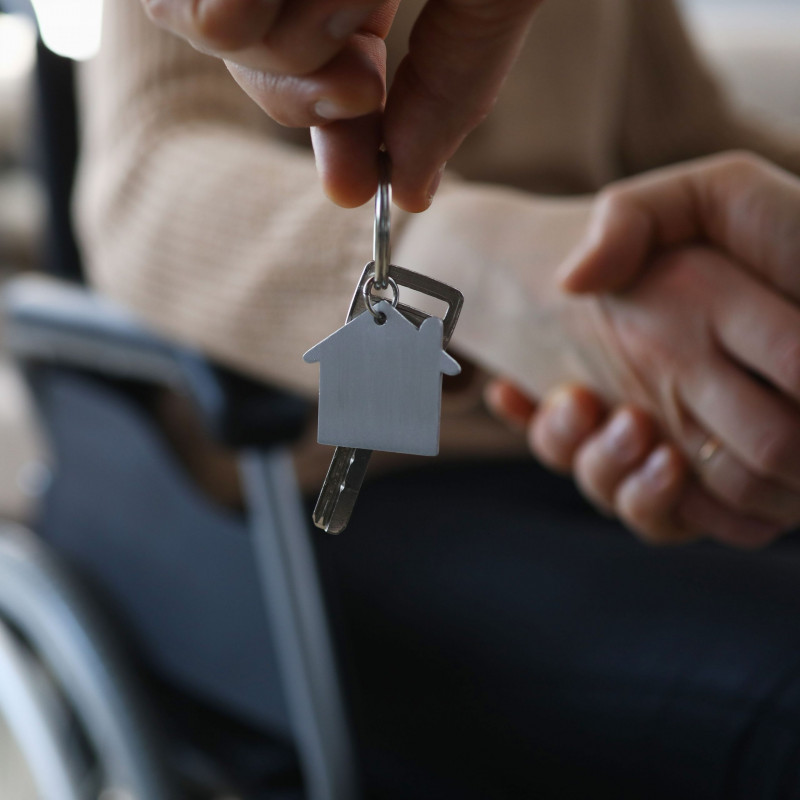
Housing crisis is magnified for people with physical disabilities. Here’s how we can help.
The U.S. housing crisis is worse for people with physical disabilities for two reasons. First, affordable housing is a challenge because people with physical disabilities are twice as likely to be low income. Second, accessibility is a challenge because significant and costly renovations are often required for people with physical disabilities. Those with physical disabilities are disproportionately impacted by the …
Read more >
Increasing access to integrated models of primary and behavioral health care in rural and urban areas of Michigan
Nationally, mental health needs increased over the last several years, exacerbated by the coronavirus disease 2019 (COVID-19) public health emergency that began in March 2020. A 2021 survey found that “…31.6 percent of adults in the U.S. reported symptoms of anxiety and/or depressive disorder, up from 11.0 percent in 2019.” Primary care and BH providers offer a range of services …
Read more >
Funding community paramedicine is an ongoing challenge, in spite of value and savings
Community paramedicine (CP) programs fill significant treatment gaps between primary care providers and emergency care providers. First, CP programs treat clients in the most appropriate settings. Second, CP programs divert patients from emergency departments when appropriate. Finally, CP programs connect clients with needed social services. But funding community paramedicine is an ongoing challenge. For patients, CP programs offer convenient treatment. …
Read more >
Telehealth for people with disabilities: here are the challenges and opportunities policymakers should consider
Telehealth was a lifeline for people with disabilities during the COVID-19 pandemic. Federal and state policy changes allowed clinics, health systems, and providers to expand telehealth services, which benefitted people with disabilities. People with disabilities, approximately one in every four Americans, are six times more likely to have ten or more physician visits and five times more likely to be admitted …
Read more >
Physicians screen patients for social needs: what happens next? Survey, analysis, and policy recommendations
Increasingly, physicians are screening patients for social needs then connecting patients to local organizations that can provide the required services. In Michigan, the U.S. Centers for Medicare & Medicaid Services provided funding to policymakers to launch new projects and partnerships to encourage physicians to screen for social needs like food and housing insecurity. The state also supported pilots that connected …
Read more >
Clear language and human-centered design can help Medicaid enrollees keep their coverage
Michigan’s expanded Medicaid program, the Healthy Michigan Plan (HMP), has provided health insurance coverage to hundreds of thousands of Michiganders since its launch in April 2014. However, in 2019, the state passed a work requirements bill, which introduced more steps needed to retain HMP coverage. The bill asked HMP enrollees to report a minimum of 80 hours of work per …
Read more >
Long COVID’s impact on Michiganders and the Michigan economy
At the time of this publication in May 2022, Michigan has had just over 2 million confirmed COVID cases, excluding deaths. At the percentages indicated in our study and in the literature, 700,000 of these Michiganders could have or may experience long COVID. This could have a major economic burden on families and the state of Michigan due to long …
Read more >
Results from the opioid settlement prioritization survey 2021–22
In 2019, Michigan and many of its districts filed lawsuits against numerous companies in the opioid industry. Settlement negotiations regarding some of these lawsuits are ongoing; however, the State of Michigan is currently drafting legislation that would establish a fund for these resources–$766 million–that would be used to support Michigan-based substance use treatment services and to address the harm created …
Read more >
Michigan physicians share perspectives on telehealth opportunities and challenges
The COVID-19 pandemic led to an unprecedented expansion of telehealth in Michigan and across the United States. This expansion was due, in large part, to a series of policy changes following the pandemic, such as increased insurance coverage for telehealth and the loosening of telehealth delivery restrictions. These new policies allowed patients greater access to remote care to reduce exposure …
Read more >
A look back at the journey of the Vital Seniors Initiative—and where it’s heading next
Washtenaw County seniors are a rapidly growing population, expected to more than double by 2040. And many face everyday challenges—such as social isolation, food insecurity, and transportation. In 2018, the Vital Seniors Initiative, managed by the Ann Arbor Area Community Foundation (AAACF) and funded by the Glacier Hills Legacy Fund, was developed to address these challenges. Four local organizations received …
Read more >